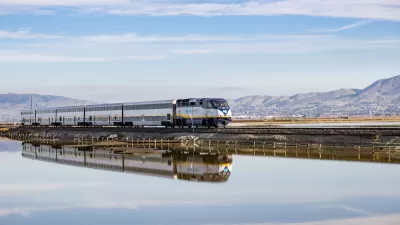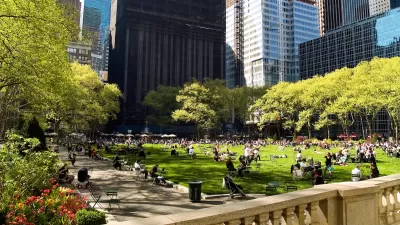Mike Ferguson reports on the process of updating the growth plan—working title "Beyond Billings"—for the city of Billings, Montana.
According to Mike Ferguson, "[by] August 2015, [Director of Billings Planning and Community Development Department Candi] Millar will describe and map potential growth scenarios and will have the county portion of the growth plan complete. By January 2016, she’ll have quantified the impacts of expected growth and selected preferred scenario elements. In May 2016, the preferred development option should be complete."
Even at its current, modest growth rates, Billings is likely to see substantial changes over the next few decades. "Even at its current growth rate — an average of 1.5 percent per year — Billings’ population will increase by more than 40,000 people in 20 years, to about 151,000. Two percent growth would push that number to about 180,000, and a 3 percent growth rate would push Billings’ population to more than 250,000 people by 2035."
So far, public feedback informing the planning process has included "affordable housing, mixed-use neighborhoods, access to schools, complete streets, attractive entryways, parks, safe neighborhoods and infill development," according to the article.
So far Millar and her team are focusing on four growth scenarios in creating the beyond Billings plan: "Those are north of the city limits, between Alkali Creek and Rehberg Ranch; urban renewal in South Billings; growth in open space farmland southwest and southeast of the city limits; and managed growth in Billings’ West End."
FULL STORY: How, where and how fast will Billings grow?

Study: Maui’s Plan to Convert Vacation Rentals to Long-Term Housing Could Cause Nearly $1 Billion Economic Loss
The plan would reduce visitor accommodation by 25,% resulting in 1,900 jobs lost.

North Texas Transit Leaders Tout Benefits of TOD for Growing Region
At a summit focused on transit-oriented development, policymakers discussed how North Texas’ expanded light rail system can serve as a tool for economic growth.

Using Old Oil and Gas Wells for Green Energy Storage
Penn State researchers have found that repurposing abandoned oil and gas wells for geothermal-assisted compressed-air energy storage can boost efficiency, reduce environmental risks, and support clean energy and job transitions.

Private Donations Propel Early Restoration of Palisades Playground
Los Angeles has secured over $1.3 million in private funding to restore the Pacific Palisades playground months ahead of schedule, creating a modern, accessible space that supports community healing after recent wildfires.

From Blight to Benefit: Early Results From California’s Equitable Cleanup Program
The Equitable Community Revitalization Grant (ECRG) program is reshaping brownfield redevelopment by prioritizing projects in low-income and environmental justice communities, emphasizing equity, transparency, and community benefits.

Planting Relief: Tackling Las Vegas Heat One Tree at a Time
Nevada Plants, a Las Vegas-based nonprofit, is combating the city’s extreme urban heat by giving away trees to residents in underserved neighborhoods, promoting shade, sustainability, and community health.
Urban Design for Planners 1: Software Tools
This six-course series explores essential urban design concepts using open source software and equips planners with the tools they need to participate fully in the urban design process.
Planning for Universal Design
Learn the tools for implementing Universal Design in planning regulations.
Ascent Environmental
Borough of Carlisle
Institute for Housing and Urban Development Studies (IHS)
City of Grandview
Harvard GSD Executive Education
Toledo-Lucas County Plan Commissions
Salt Lake City
NYU Wagner Graduate School of Public Service





























